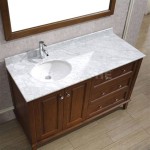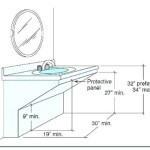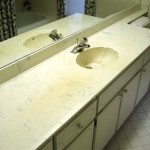Essential Aspects of Tiling a Splashback Above Bathroom Basin
Tiling a splashback above the bathroom basin is a practical and stylish way to protect the wall from water and moisture, while also adding a decorative touch to the space. Here are some essential aspects to consider when tiling this area:
1. Material Selection
Ceramic tiles are a popular choice for bathroom splashbacks due to their durability, ease of maintenance, and wide range of styles and colors. Porcelain tiles are also suitable, offering similar qualities to ceramic tiles but with a lower water absorption rate.
Natural stone tiles, such as marble or granite, can add a luxurious touch but require more care and maintenance. Glass tiles are another option, providing a sleek and modern look, but they are more prone to chipping.
2. Tile Size and Shape
The size and shape of the tiles you choose will impact the overall look of the splashback. Smaller tiles create a more intricate pattern, while larger tiles provide a more seamless and modern appearance.
Rectangular tiles are a classic choice, but square, hexagonal, or even mosaic tiles can add unique interest. Consider the dimensions of the basin and the surrounding space to determine the most suitable size and shape.
3. Mortar and Grout
The mortar you use to set the tiles should be suitable for bathroom applications, providing strong adhesion and water resistance. Thin-set mortar is a common choice, while mastic adhesive is also an option for smaller or lighter tiles.
The grout used to fill the joints between the tiles should be waterproof and stain-resistant. Epoxy grout is a good option for areas that experience high moisture and humidity.
4. Proper Preparation
Before tiling, the wall surface should be properly prepared to ensure good adhesion. This includes cleaning the surface, removing any dirt or debris, and making sure it is flat and smooth.
If the wall is not already waterproofed, you may need to apply a waterproofing membrane or primer to prevent moisture from penetrating behind the tiles.
5. Sealing the Tiles
Once the tiles are installed, it is essential to seal them to protect them from water damage and staining. Use a penetrating sealer that will soak into the tile's pores and create a barrier against moisture.
Apply the sealer according to the manufacturer's instructions, typically two to three coats, and allow it to dry completely before using the shower or basin.
6. Maintenance and Cleaning
Regular maintenance and cleaning will help keep your bathroom splashback looking its best. Use a mild, non-abrasive cleaner to wipe down the tiles and remove any dirt or soap residue.
Avoid using harsh chemicals or abrasive sponges, as these can damage the tiles or grout. Regularly resealing the tiles every few years will also help maintain their protection against water and staining.

Cloakroom Vanity Unit With Metro Tiles As Backsplash By Bathroom Guru Splashback Toilet And Sink

Bathrooms Raw Dice Small Bathroom Sinks Trendy Splashback

Do You Need A Splashback Behind Bathroom Sink

A Guide On How To Install Mosaic Splashback House Of Mosaics

Bathroom Tile Ideas For Small Bathrooms

6 Bathroom Splashback Designs That Are Bang On Trend For 2024 Goodhomes

Tiled Splash Back Images

Tiling Round A Bath Bathroom Guru

Do You Need A Splashback Behind Bathroom Sink

How To Lay Mosaic Tiles Installing Tile
Related Posts







